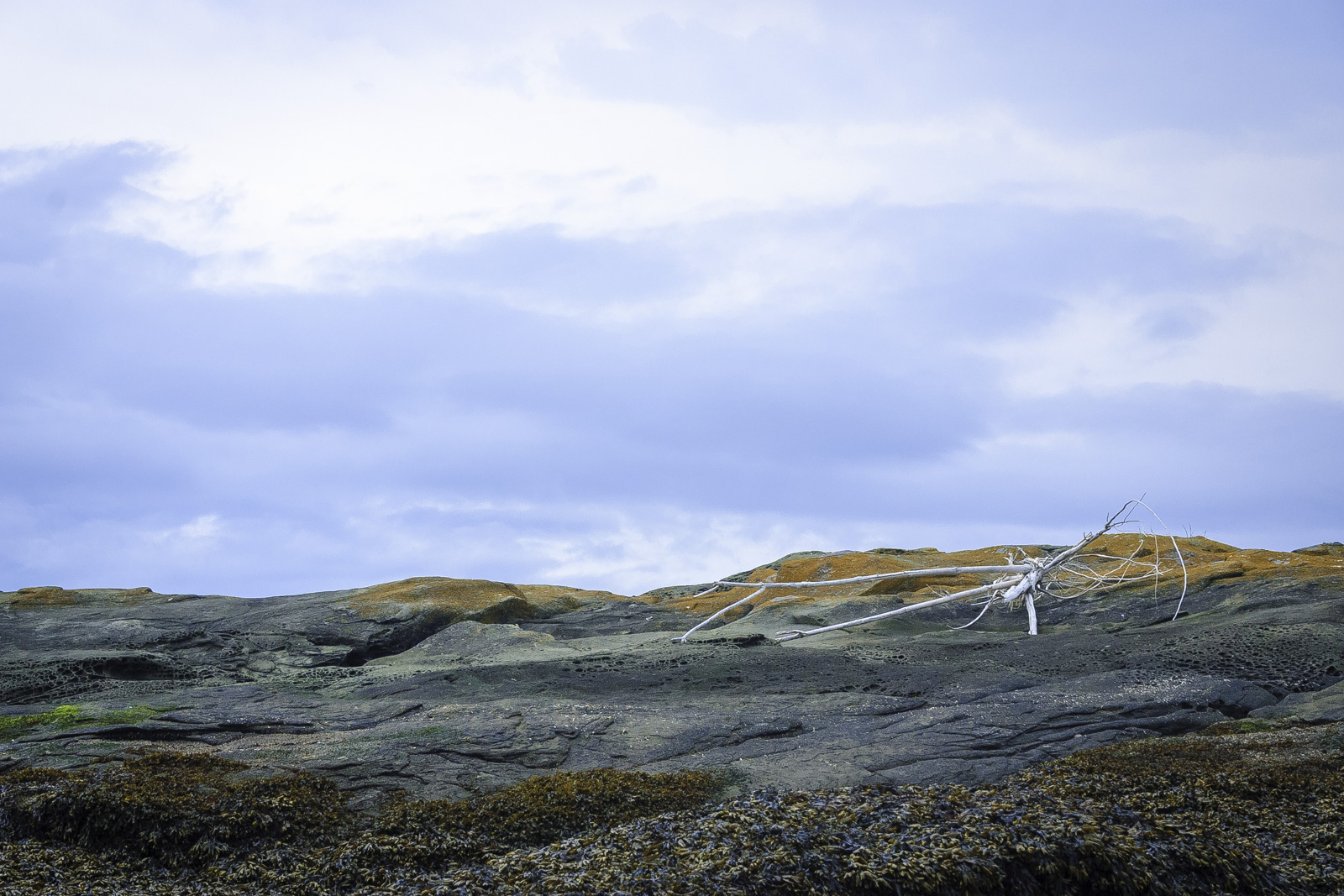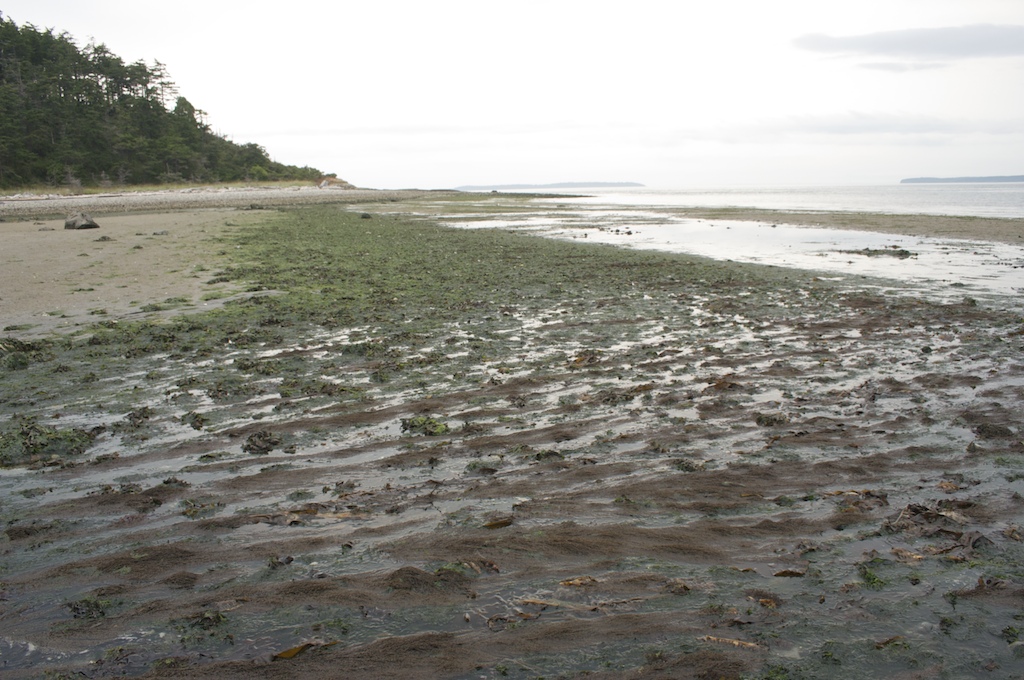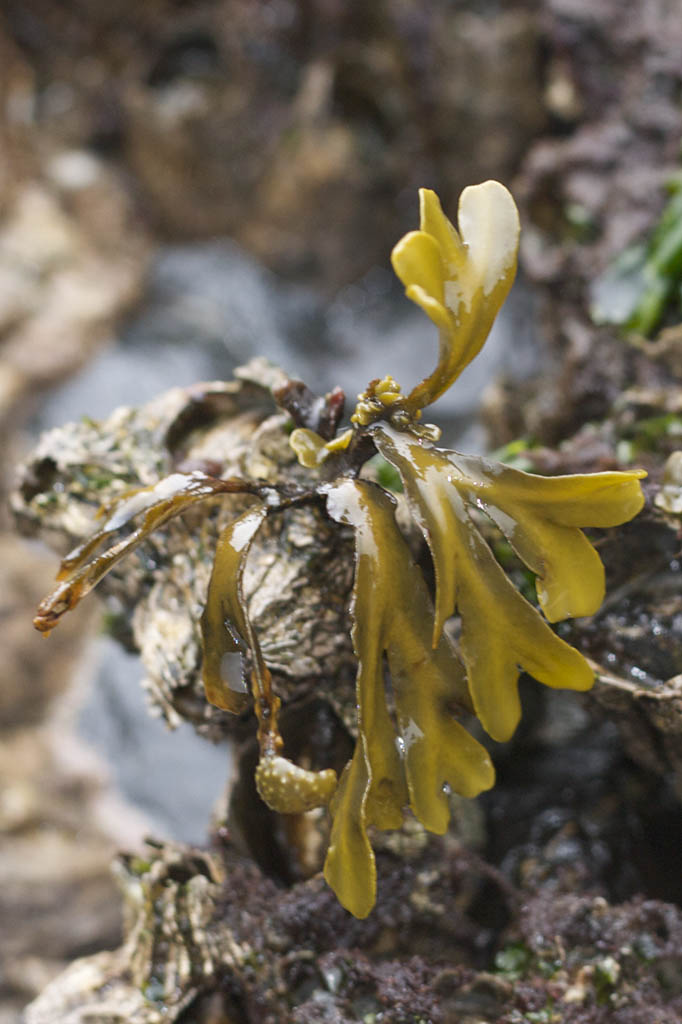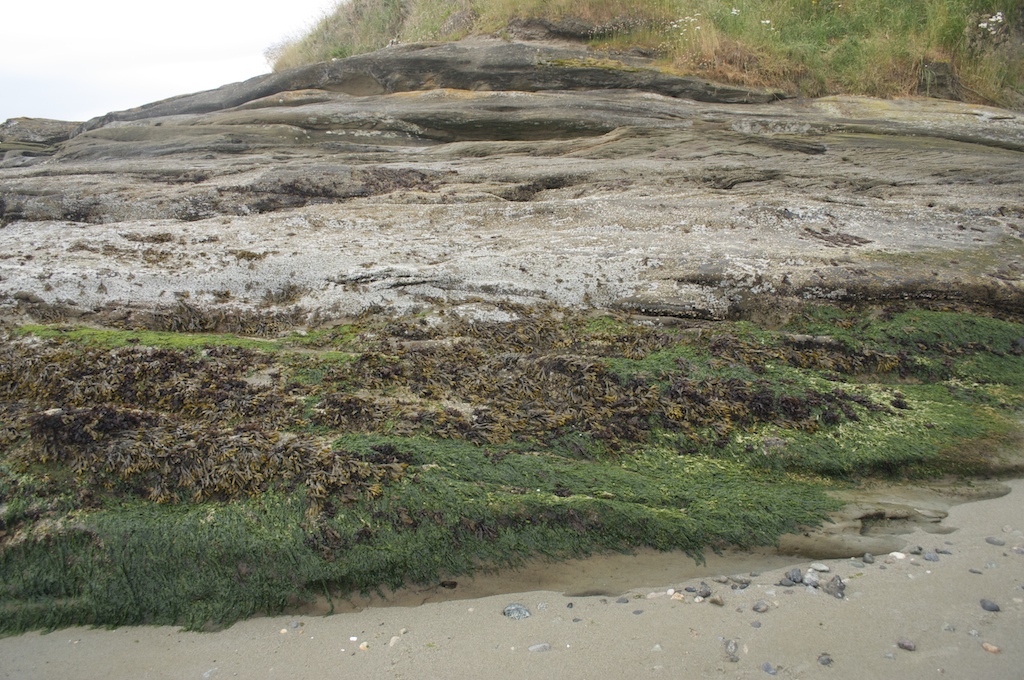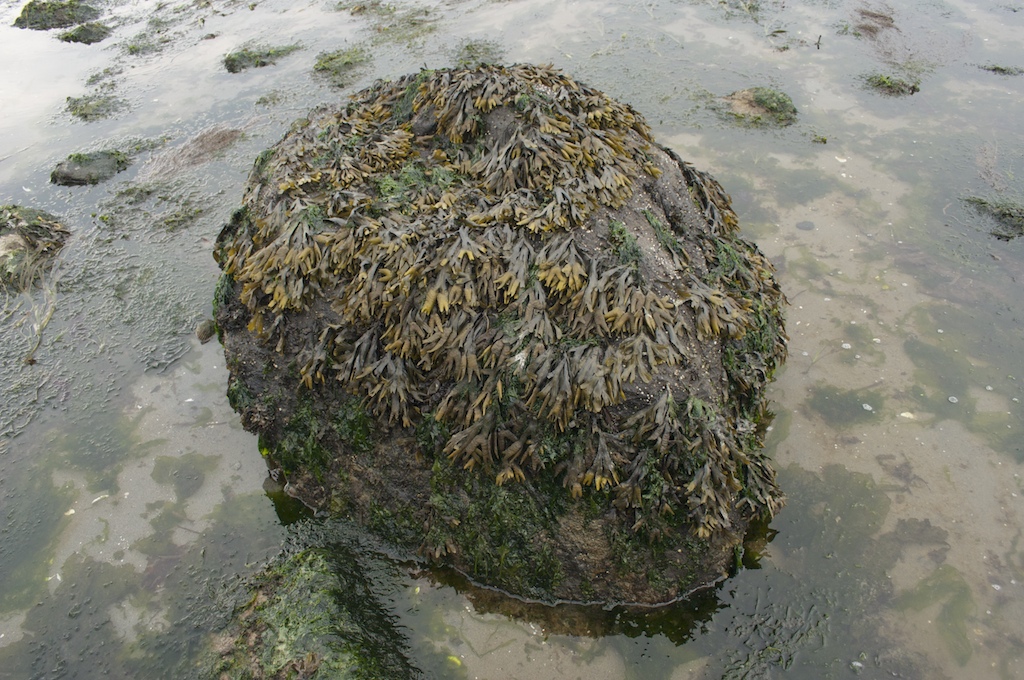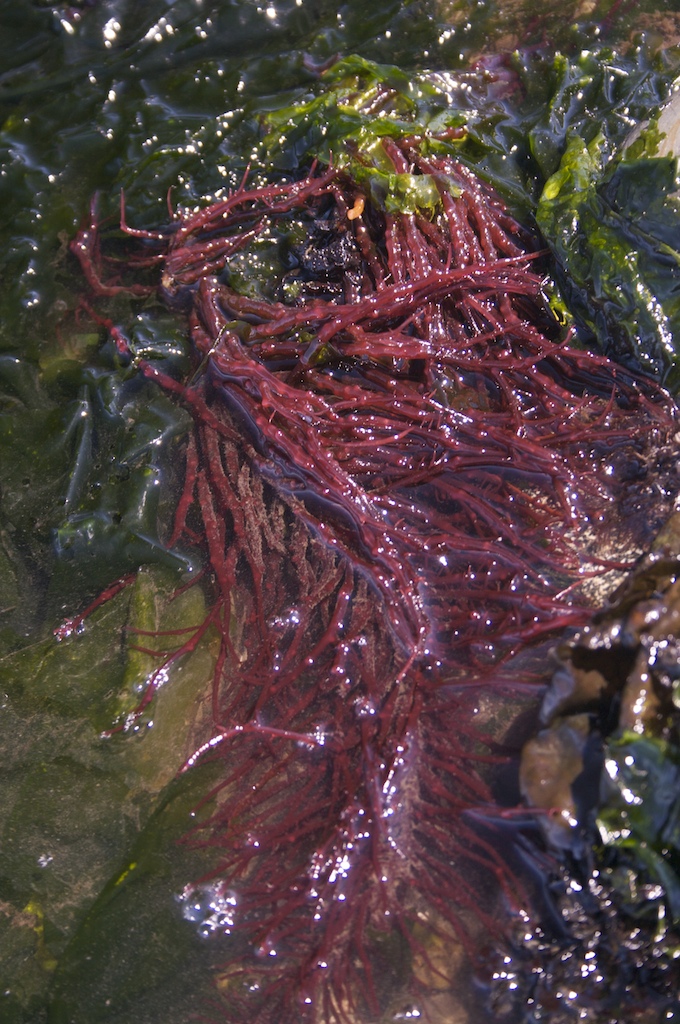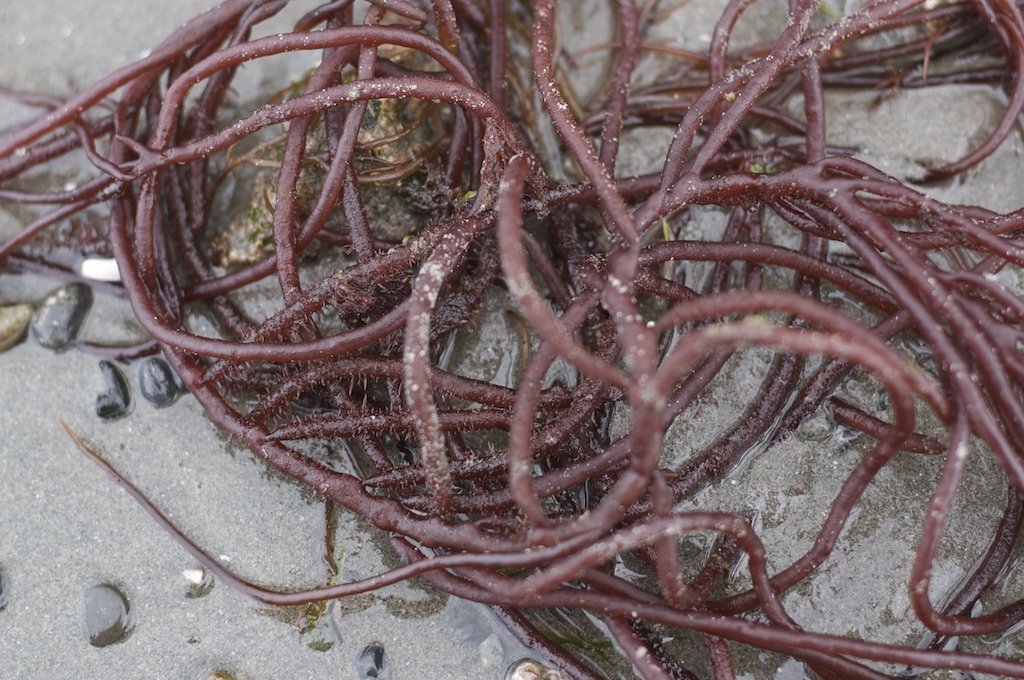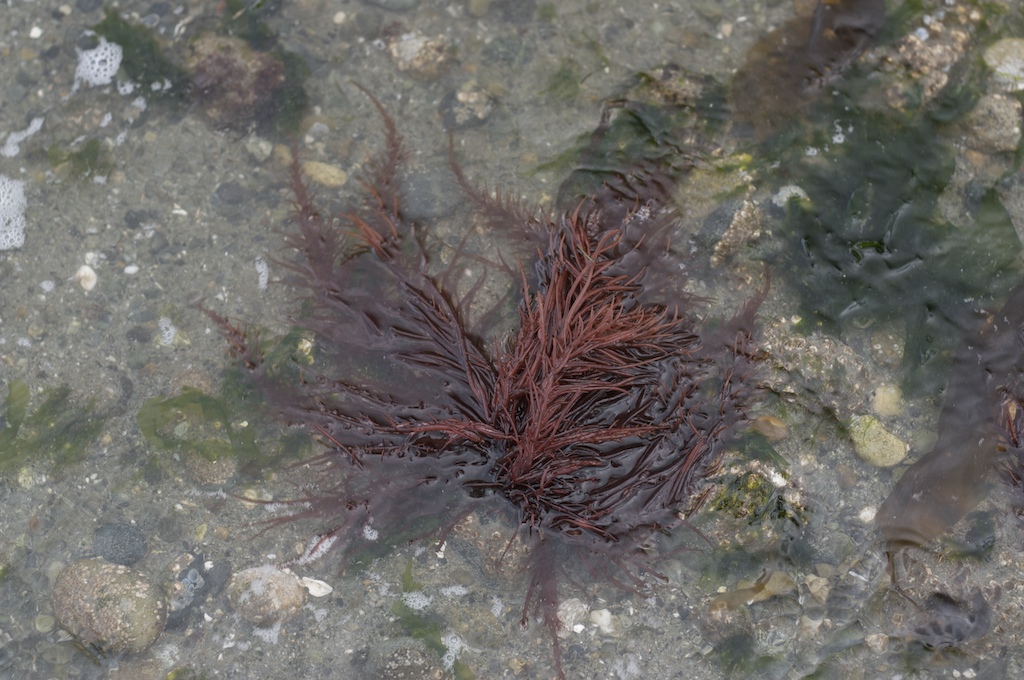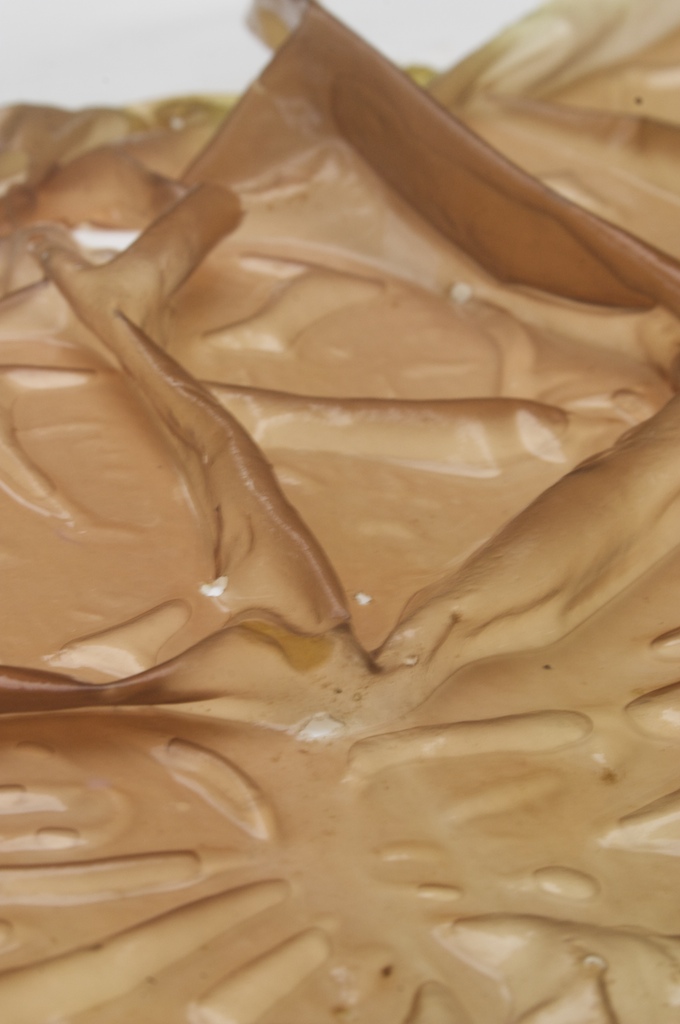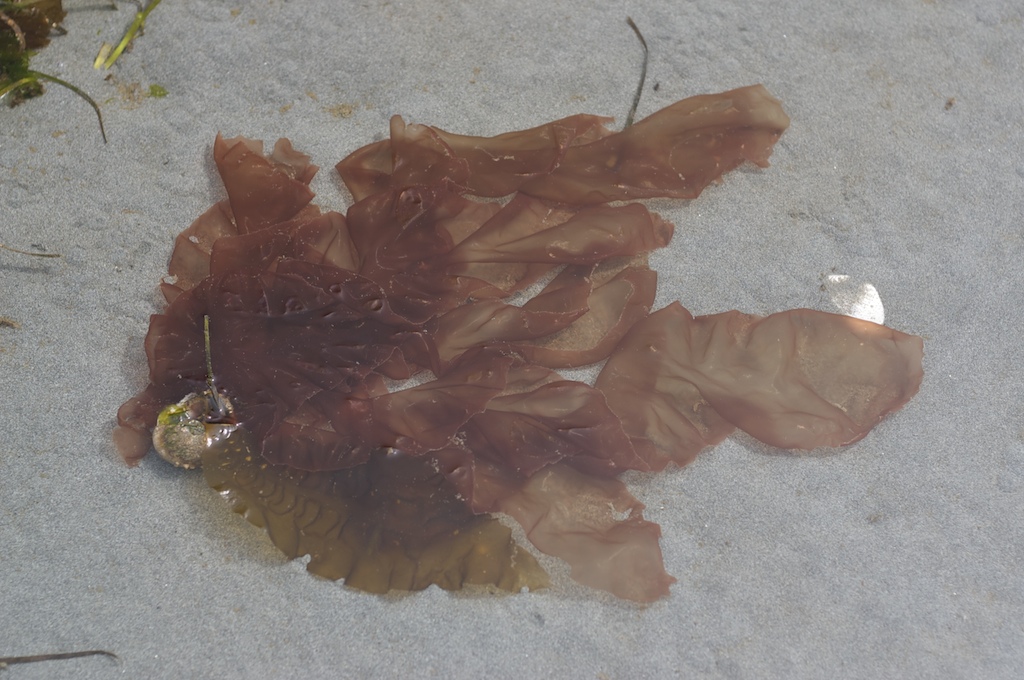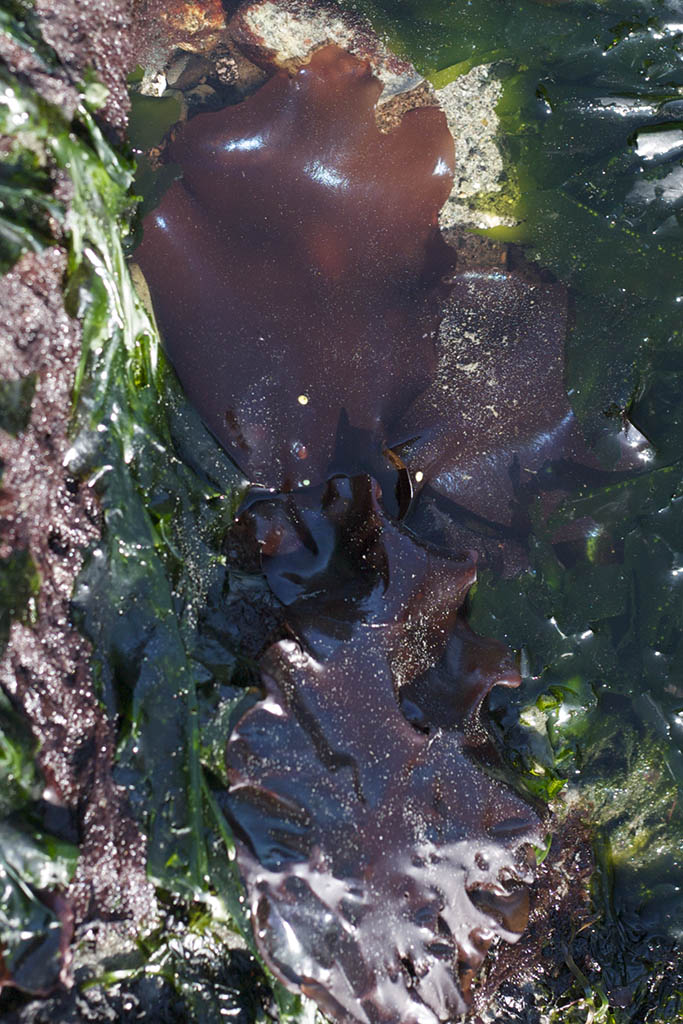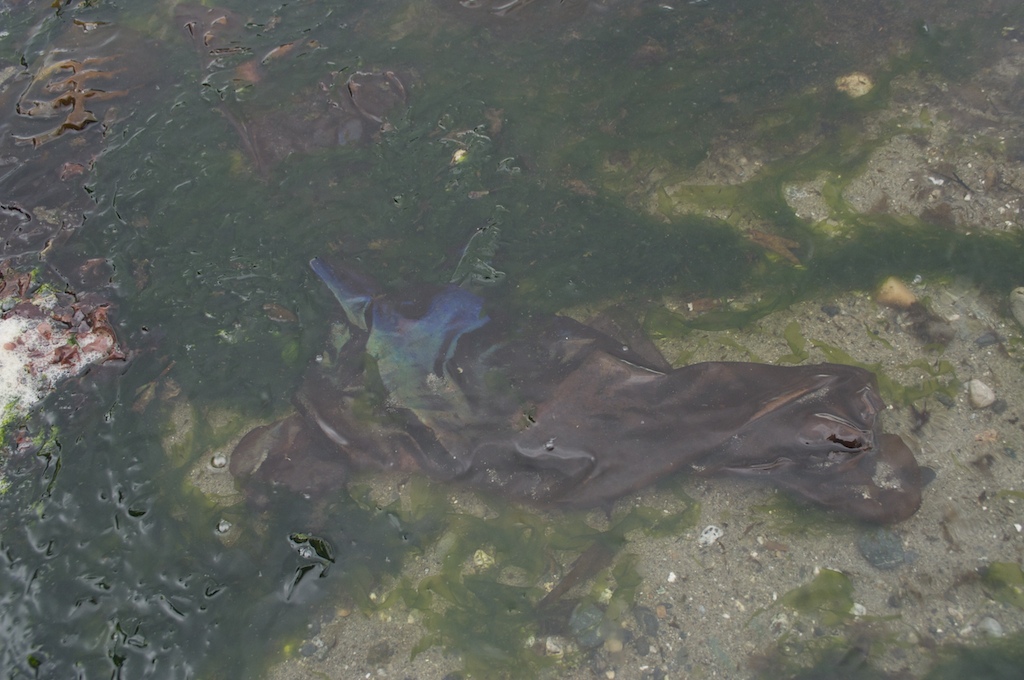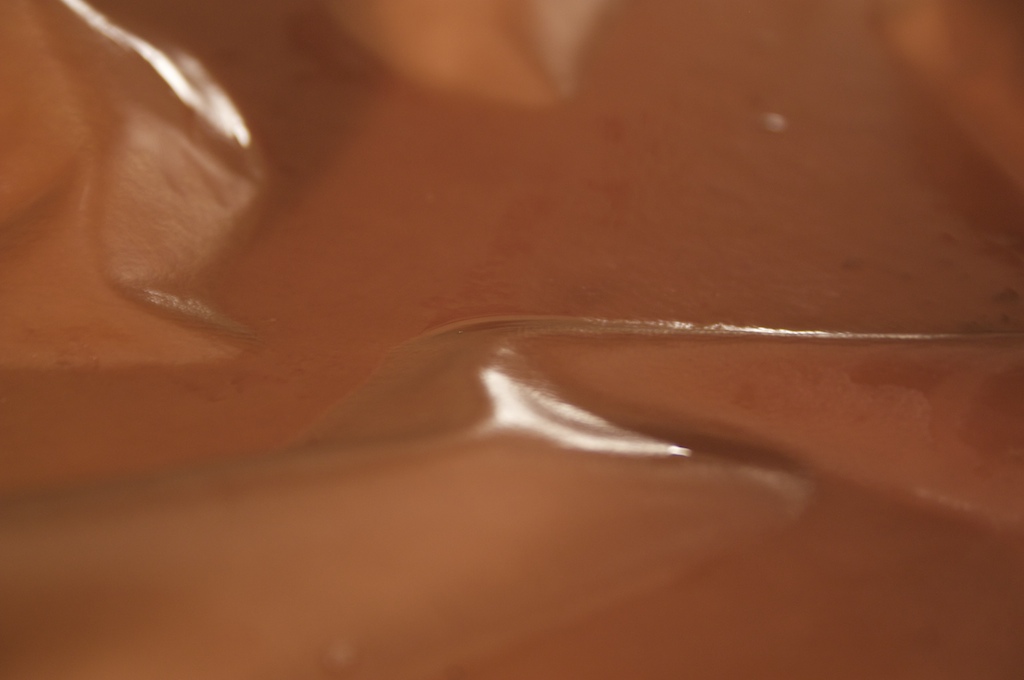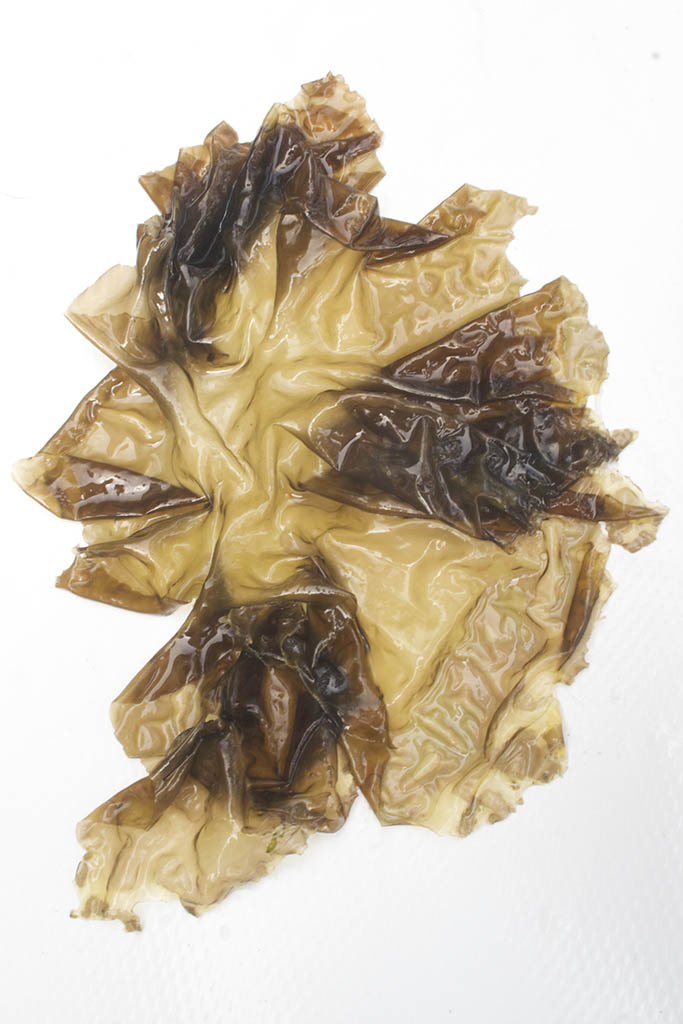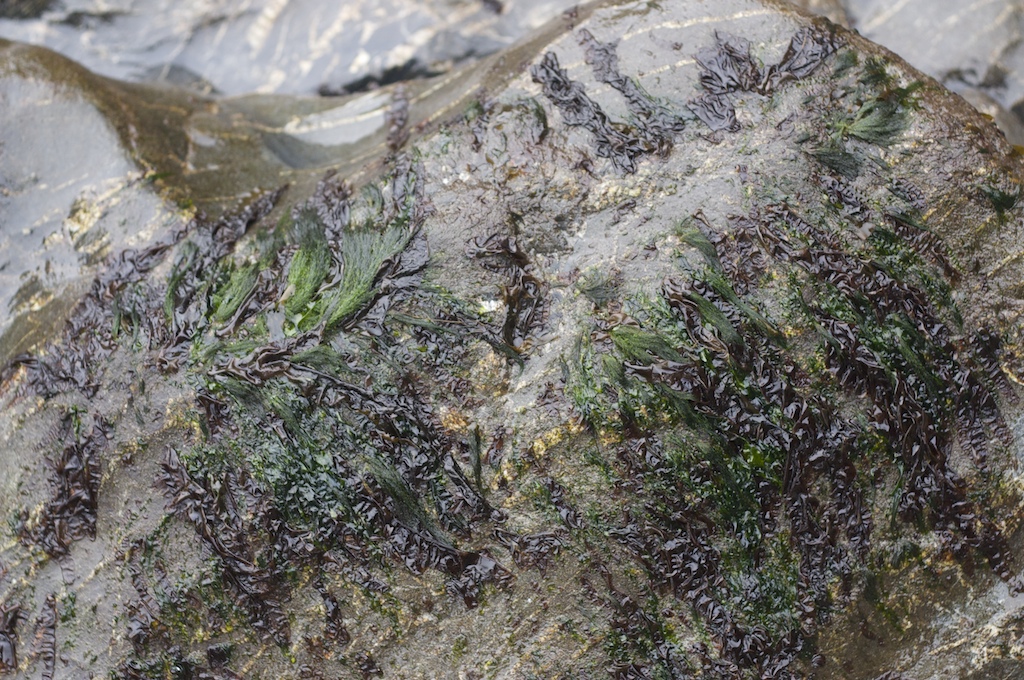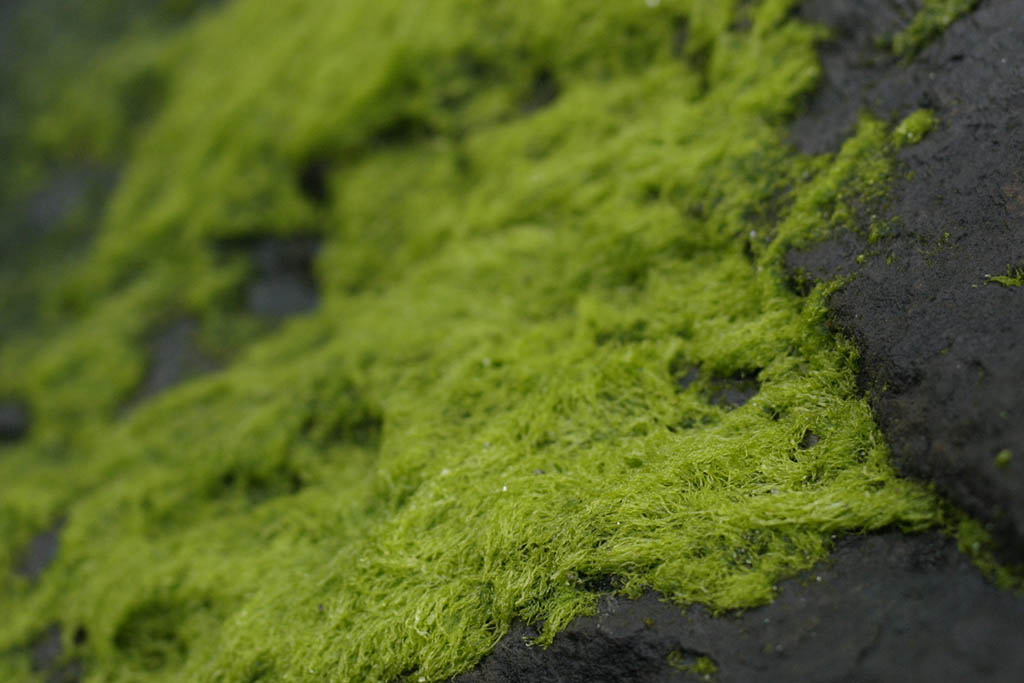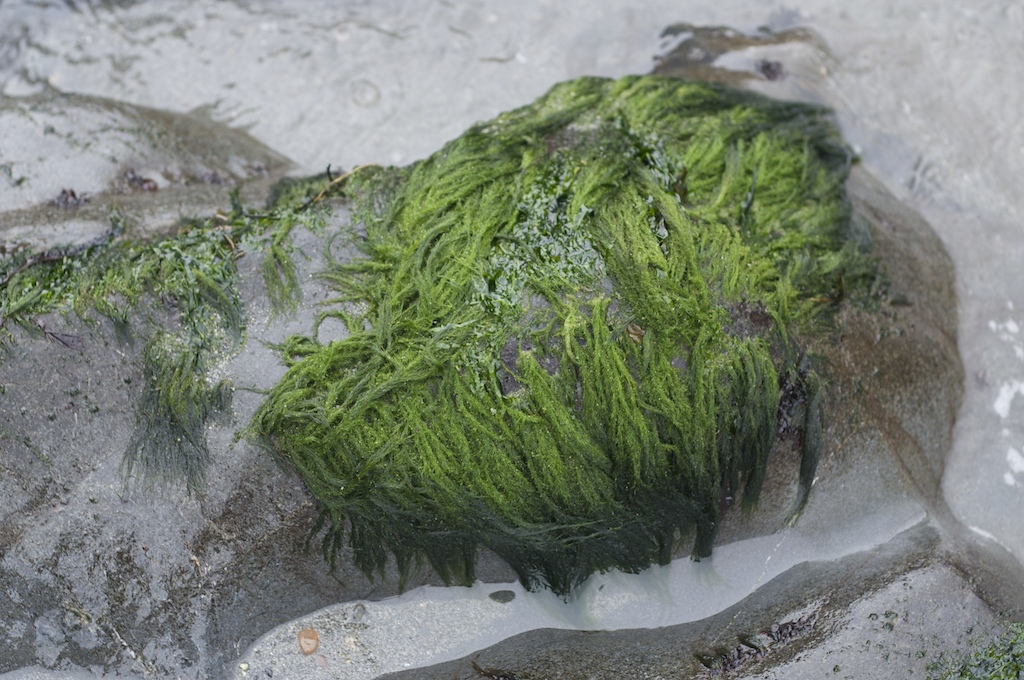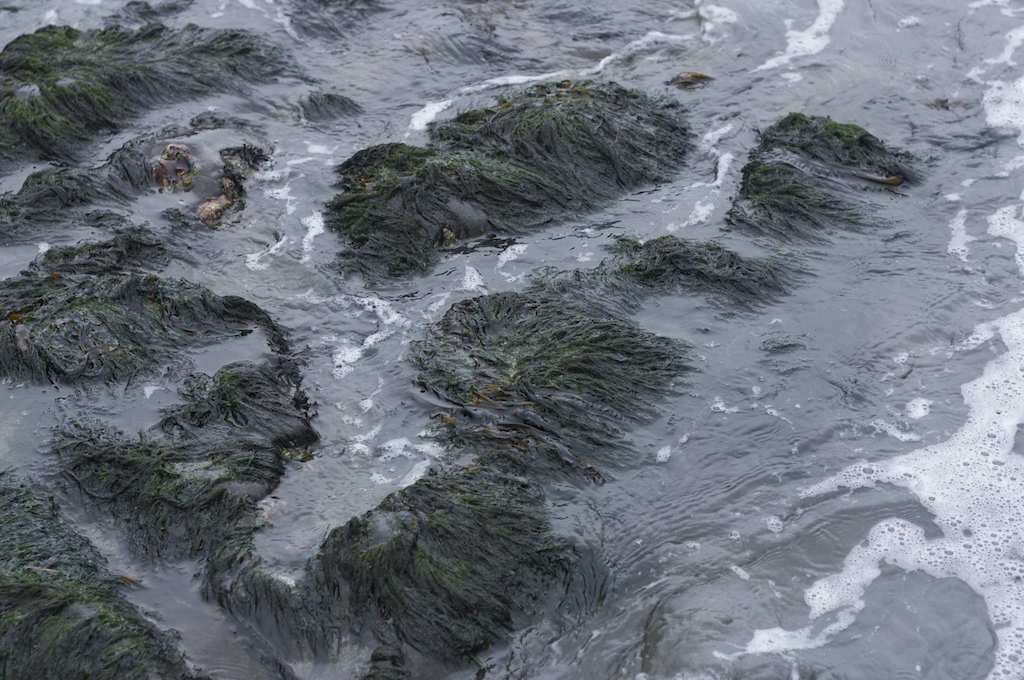Sargassum muticum
Color: Brown (Golden)
Shape: Branched (Profusely)
Texture: Bushy
Size: Up to 6’+
Zone: Intertidal to Subtidal
Range: Alaska to Mexico
Description: A cascade of tiny blades with on a long, thin stipe with many branches, dotted with small, round, bead-like vesicles. The stipe is attached to a small disc-like holdfast. The blades are less that 1 inch with toothed edges. Sargassum sometimes forms floating masses and prefers wave-sheltered areas.
Edibility: Edible
Distinctive characteristics: Aggressive invasive species.
Collection notes:
Phylum: Phaeophyta (Brown Algae)
Previous names: Sargassum kjellmaniaum f. muticum
Similar species: Sargassum natans (of the Sargasso Sea), Cystoseira geminata, which has pointy floats, in addition to round ones.
